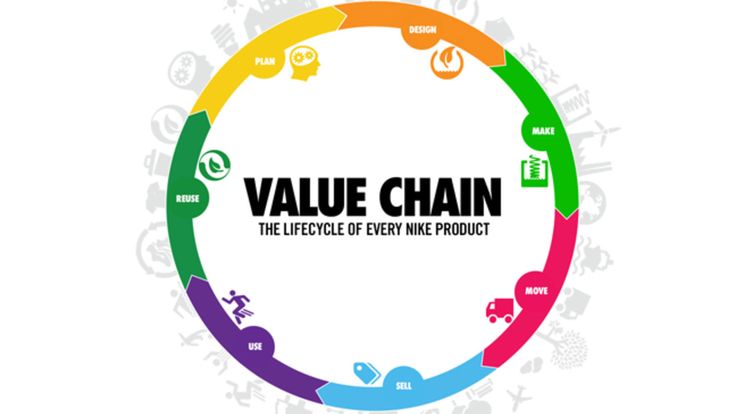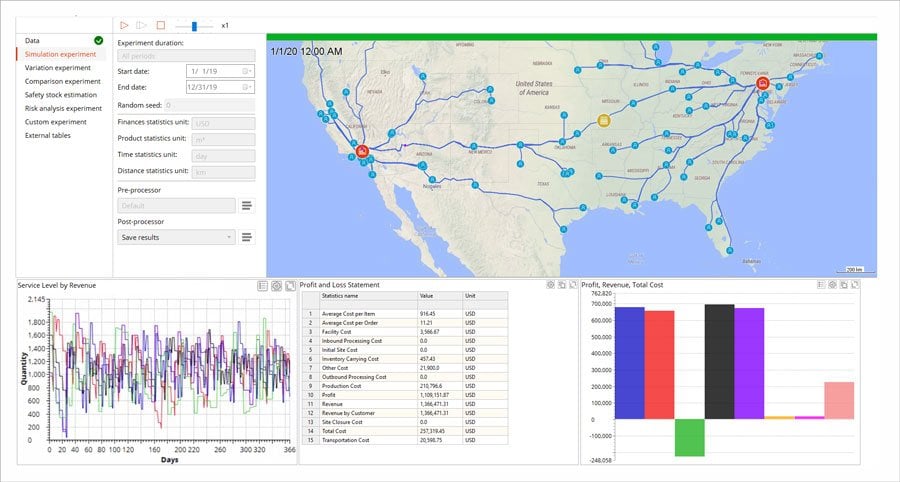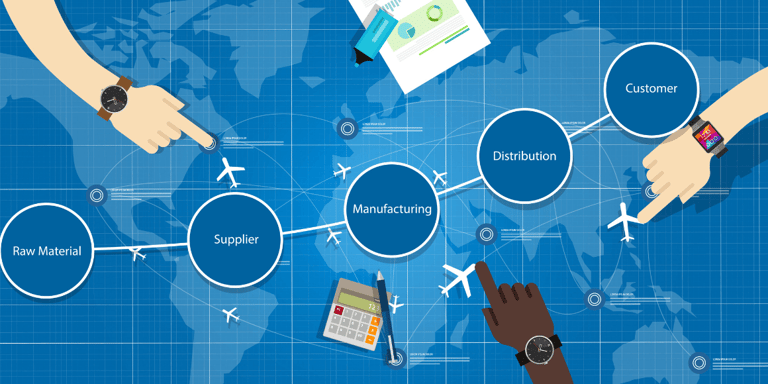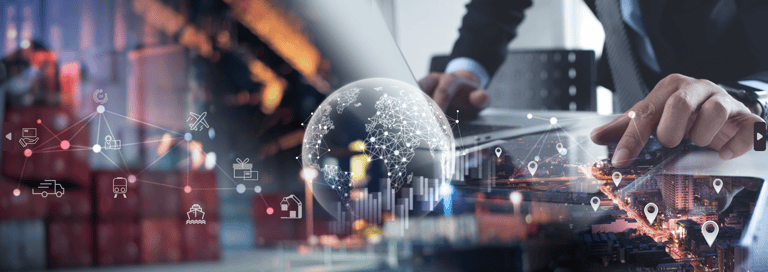Headlines from Well Known Brands Committing to Reduce CO2 Emissions
Starbucks Pledges 50% Reduction in Supply Chain Emissions
Asics plans to cut 55% of its supply chain carbon emissions
H&M appoints former sustainability head as CEO
American Eagle Outfitters pledges to be carbon neutral by 2030
Nestlé, Ikea, Danone among 87 firms committed to further carbon emission reductions
Microsoft Pledges To Remove From The Atmosphere All The Carbon It Has Ever Emitted
The Opportunity in CO2 Emissions Reduction
The message is clear: Reduce CO2 Emissions from the Supply Chain. The green catalyst opens an incredible opportunity for smart companies to do good for the environment, grow the top line, and add to the bottom line.
The headlines above comprise a small subset of companies making a bold, expensive investment to improve their business and their environment. Starbucks, American Eagle, Nestle, Ikea, Danone, Microsoft, H&M, and Asics are included.
For most, its not just a headline. Nike’s green initiative promises “Every product and partner, every decision, every gateway, every stage from concept to reclamation adds to a near infinite ecosystem of cause and effect. To offer as much clarity into this ecosystem as possible, we’ve distilled it down to seven fundamental stages – Plan, Design, Make, Move, Sell, Use, Reuse.” The image below comes from the 85 page Nike Sustainable Business Performance Strategy in which they lay out how a focus on sustainability will allow them to grow their business.

The Environmental Impact of Reducing CO2 Emissions
Creating a strategic future for the business that includes sustainability is great for the environment.
Leading companies like Nike aren’t just creating sustainability in their existing operations, they are changing their business to create sustainability in their processes and their ecosystem.
In the seven stages above, Nike adds ‘Reuse’ – “Finding innovative ways to resuse our products like creating running tracks, sports course….” The idea to focus on reuse is an incredible change for an organization the size of Nike.
The Business Impact of Reducing CO2 Emissions
Marketing and Sales
The business impact of going green touches marketing and sales. It allows companies to capture a younger market before their competitors.
Finance and Operations
The business impact of going green touches finance as a “big” capital investment of going green (should) cut costs across operations. Of course, you can’t throw caution to the window and expect an ROI on any project, but a good green strategy will save the company money – fewer miles on the road, less wasted inventory, leaner operations, etc.
Supply Chain
The first place leadership looks to make a green impact is often in the supply chain. The supply chain is an attractive place to start because it often has the largest impact on the environment, it has quick hits for an environmental ROI, and quick hits to cut cost and differentiate the business.
Using Supply Chain Tools You Already Know To Reduce CO2 Emissions
Optimization
Every supply chain analyst understands optimization. Whether you use an Excel extension to run your optimization models or a more sophisticated tool like anyLogistix or Llamasoft, you understand network optimization. If you aren’t familiar with network optimization, here’s a quick read on why network optimization should be part of any supply chain strategy.
Traditionally, supply chain optimization parameters focus on maximizing revenue, minimizing cost, and meeting a given service level.
If you prioritize the goal to reduce CO2 emissions in your green strategy you’ll want to add an objective to minimize CO2 emissions.
Tool tip: anyLogistix has built-in cost parameters for CO2 so the model can easily calculate emissions and optimize based on a new objective.
Simulation
Another great supply chain tool is simulation. When you simulate a supply chain you’re able to capture all of the complexity of the supply chain including time, variability, and system interactions. You can learn more about simulation here.
The benefit for CO2 reduction initiatives (similar to the benefit in traditional supply chain simulation models) is that the simulation will tell you how your supply chain will play out in the real-world.
While a Network Optimization model can give you the best structure for your supply chain to minimize CO2 emissions, simulation can show how that actually plays out in the real world.
When you simulate a supply chain you can test inventory levels to minimize waste or test load policies to ensure you maximize every load. You can test any change to your supply change and know exactly how that will impact the business, your customers, and the environment.
Applications outside of network design - Electric Vehicle ROI and Reuse Planning
Network optimization and simulation are techniques with proven tools to solve traditional supply chain problems. Although CO2 emission reduction is not a traditional strategy, it can be significantly improved with these traditional tools.
Simulation can help in other sustainable initiatives like evaluating electric vehicle ROI or planning reuse into existing operations.
Electric vehicles and new business processes create new opportunities for organizations to lower their carbon footprint while having an impact on their business.
Gas-powered vehicles and commercial electric vehicles both have a limited range, but of course, developed countries have a large infrastructure of gas stations. Commercial electric vehicles do not have access to the same infrastructure, so introducing electric vehicles isn’t a simple swap from gas to electric - especially for long range trips.
The obvious opportunity then is to use commercial electric vehicles in short and medium-range trips where they can charge-up at their fleet yard, but charging stations are even limited at the vehicle's home-base. Most yards have a limited number of charging stations making it hard to operate an electric fleet.
While these limitations create a challenge for hitting zero-emission goals, they also create an opportunity to leap ahead of the competition. Companies are already making the investment.
Here's a few headlines from well-known brands investing in electric fleets
Amazon is Creating a Fleet of 100,000 Electric Delivery Vans
UPS is taking on Amazon with its own Fleet of Electric Vans
Mayor de Blasio to Sign Order for all Municipal Vehicles in NYC to be Electric by 2040
What if you could run a fully electric commercial fleet? How would you set it up? How would you operate it? When would you expect an ROI on the investment?
These are the types of questions we can answer when we use traditional tools like simulation and optimization together. At SimWell, we love taking on these hard projects that have an impact on the environment.
If you’ve set an objective to reduce CO2 emissions, make an investment in electric vehicles, or change your supply chain in any way we can help you evaluate your strategy and operating procedures before you make an investment. We specialize in simulation and optimization software and consulting services. We’d love to hear what you’re working on and you can connect with us here.
Simulation Tools and Optimization Tools to Help You Reduce Your Carbon Footprint
Once your team has set the objective of reducing your carbon footprint, you can start planning how. You’ll likely look to facilities or your supply chain if transportation is your biggest culprit of emissions and the biggest opportunity to save money.
anyLogistix helps you to replicate your supply chain so you can run GFA’s, network optimization, transportation optimization, and simulation all in one tool. Tools like AnyLogic and Arena helps you to simulate your supply chain or factory so you can test how your proposed change will work in the real world.
CO2 Reduction is Good For Business and Good for the Environment
Big initiatives require buy-in from the entire executive team and sustainability has something for everyone. Even if every team member has a different focus between growing your business, cutting costs, or improving the environment there is something for everyone in these initiatives.
If you’re making changes to your supply chain to meet CO2 reduction goals, you’re likely wondering how to make the biggest impact on the environment and reduce costs while maintaining an acceptable service level.
That’s not easy when your supply chain is a complex system. At SimWell, we help companies to replicate their supply chain in a virtual world and test each change so they know exactly how it will play out in the real world. Our customers never have to worry about choosing the wrong option.
About Us
SimWell is the North American leader in simulation and optimization solutions. If you need help capturing the complexity of your supply chain in a simulation model, or you need to find the right tools to do it yourself we can help.
It starts with a conversation. Send us a live chat, or click Start the Conversation. We want to learn about your supply chain challenges and see how we can help.
Sources
Starbucks Pledges 50% Reduction in Supply Chain Emissions - https://risnews.com/starbucks-pledges-50-reduction-supply-chain-emissions
Asics plans to cut 55% of its supply chain carbon emissions - https://www.supplychaindive.com/news/ASICS-plans-55-carbon-emission-cut/525838/
Fast fashion giant H&M appoints former sustainability head as CEO - https://www.eco-business.com/news/fast-fashion-giant-hm-appoints-former-sustainability-head-as-ceo-activists-call-for-a-different-business-model/
American Eagle Outfitters pledges to be carbon neutral by 2030 - https://fashionunited.uk/news/fashion/american-eagle-outfitters-pledges-to-be-carbon-neutral-by-2030/2019092745473
Nestlé, Ikea, Danone among 87 firms committed to further carbon emission reductions - https://www.supplychaindive.com/news/nestle-ikea-danone-87-firms-carbon-emissions-sbti/563451/
Microsoft Pledges To Remove From The Atmosphere All The Carbon It Has Ever Emitted - https://www.npr.org/2020/01/16/796758230/microsoft-pledges-to-remove-from-the-atmosphere-all-the-carbon-its-ever-emitted
Amazon is Creating a Fleet of 100,000 Electric Delivery Vans
https://www.businessinsider.com/amazon-creating-fleet-of-electric-delivery-vehicles-rivian-2020-2
UPS is taking on Amazon with its own Fleet of Electric Vans https://www.cnbc.com/2020/01/29/ups-is-taking-on-amazon-with-its-own-fleet-of-electric-vans.html
Mayor de Blasio to Sign Order for all Municipal Vehicles in NYC to be Eletric by 2040 https://www.nydailynews.com/news/politics/ny-de-blasio-municipal-fleet-electric-nyc-2040-20200205-p6jzjyt5ujdkvh2bk7wbi3mdvm-story.html






-1.png?width=768&height=512&length=768&name=Add%20a%20subheading%20(4)-1.png)
